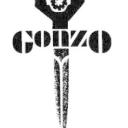Yahoo Answers is shutting down on May 4th, 2021 (Eastern Time) and beginning April 20th, 2021 (Eastern Time) the Yahoo Answers website will be in read-only mode. There will be no changes to other Yahoo properties or services, or your Yahoo account. You can find more information about the Yahoo Answers shutdown and how to download your data on this help page.
Trending News
What is the advantage of a computerized telescope versus a non-computerized?
What does it mean when the description says "Database allows telescope to locate over 4,000 celestial objects?" What is the advantage of controlling the telescope via computer? Do you think it is worth an extra $250?
5 Answers
- ThomasLv 76 years agoFavorite Answer
"Database allows telescope to locate over 4,000 celestial objects?" that is how many nebulae, star clusters, galaxies, and whatever the mount's computer has the co-ordinates for programmed in. (Really all the computer stuff is done by the mount, the scope is just fixed onto it). Bear in mind that just because the scope can point at an object doesn't mean you can see it! A small aperture telescope won't show what a large one can, all else being equal.
When the system works well you don't have to spend time locating the object, but as Nyx says many amateurs *like* locating things ourselves. Once the object is found a computerized mounts will keep tracking it, that's really useful for group viewing. The major drawback is most computerized mounts require power, you can't push the scope around by hand, so a flat battery means the end of observing.
As for cost, depends on your budget and requirements. With a fixed overall budget getting a computerized scope will mean sacrificing something else, and usually it's the all important *aperture* that lets the scope show faint objects and fine detail. But if a larger aperture scope would be too big and heavy anyway then you're not losing anything.
- ?Lv 76 years ago
Let's just say that The Chabot Space and Science Center in Oakland has a beautiful 20" refractor made out of brass in 1915. It's 30 feet long or something. The professional astronomers there retrofitted it with computerized tracking. I also use an electronic calculator to balance my checkbook though I learned the old fashioned telescope ways too.
- campbelp2002Lv 76 years ago
The hardest thing for a beginning amatuer astronomer is finding the things you want to look at with the telescope. The Moon is very easy to find of course, and the naked eye planets and stars are pretty easy to find, but finding a small, dim, star cluster, nebula, or galaxy that cannot be seen without a telescope is hard to do. So having a computer do it for you really helps in those cases. Some purists think it is cheating though, because it is too easy. Like relying on a GPS to tell you where to go instead of using a paper map.
- 6 years ago
I'm going to both agree and disagree with Joe... Starting off, if you're *really* wanting to learn astronomy, I'd recommend a manual scope; it does teach you the sky; do it often enough, and sky coordinates become second nature.
That being said... the computer-driven scope has a couple of advantages... first, the challenge of *finding* the star or planet is removed. If you *have* learned the sky, then maybe you don't need the challenge of locating and pointing the scope. (especially if you have little ones that remove the finderscope every now and then... grrrrr....)
Second - and what I liked best - was that the sope tracked for you. Instead of watching Saturn or the moon drift across your field of view due to Earth's rotation - it was steady in the eyepiece so everyone could see it for as long as they needed to, without the need of moving the scope every 75 seconds or so.
- How do you think about the answers? You can sign in to vote the answer.
- JoeLv 76 years ago
That's called a "go-to" telescope. They are certainly easier to use, once you've got the scope leveled and aligned with the azimuth (north), but you're taking all the skill out of finding your way around the sky.
There's a certain real satisfaction to learning your way around the sky, and manually aiming your telescope. You don't learn those skills by punching nebula names into a controller.
If you don't have the patience or desire to learn the sky, the "go-to" scope might suit your needs. Otherwise, put that extra $250 toward a better quality instrument.
EDIT:
A bunch of people agreeing with each other here...
I just feel like adding that, if you're doing group observing, especially with little ones who don't have much of an attention span, the speed of operation a "go-to" scope provides can be a real godsend.





